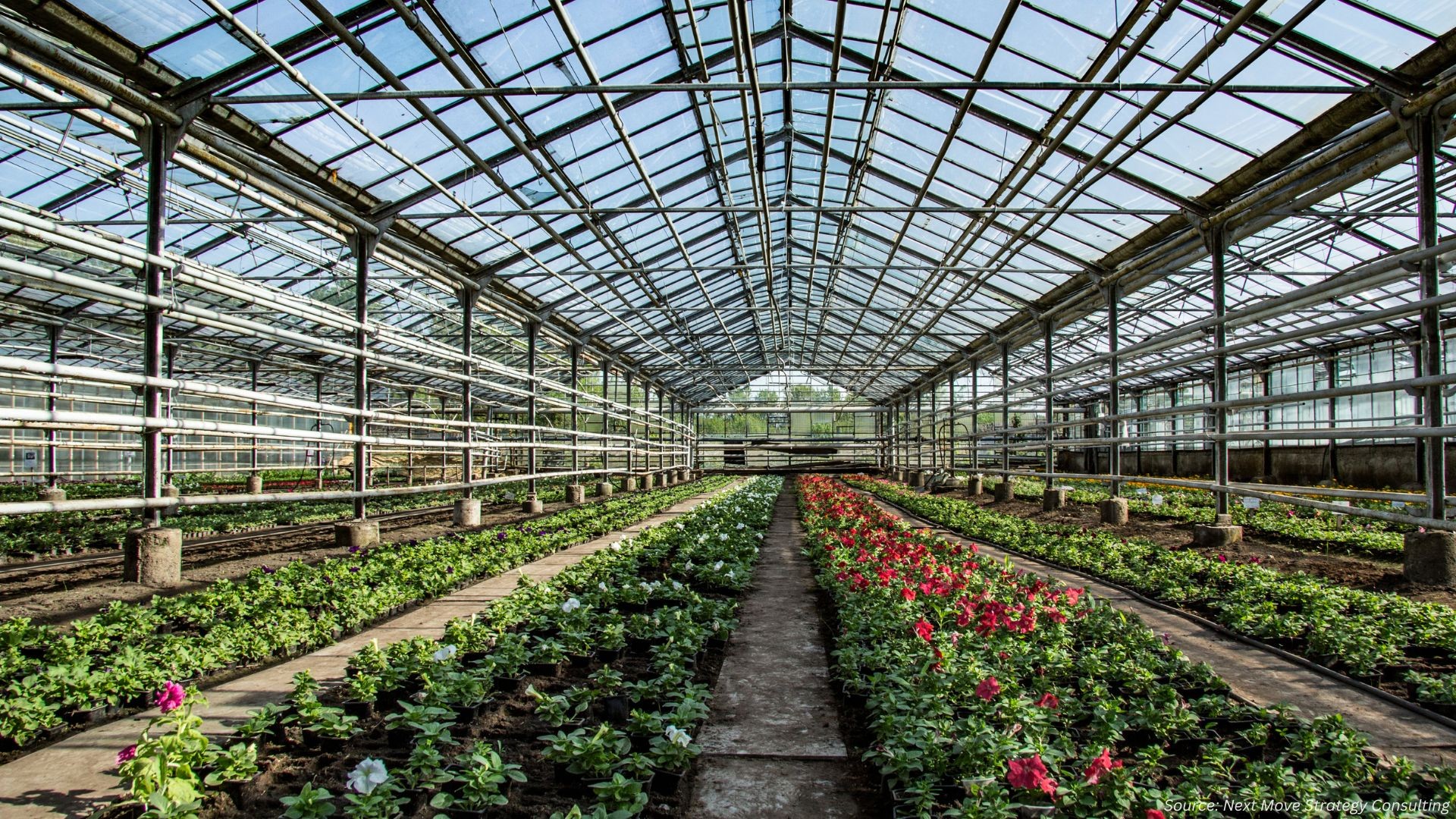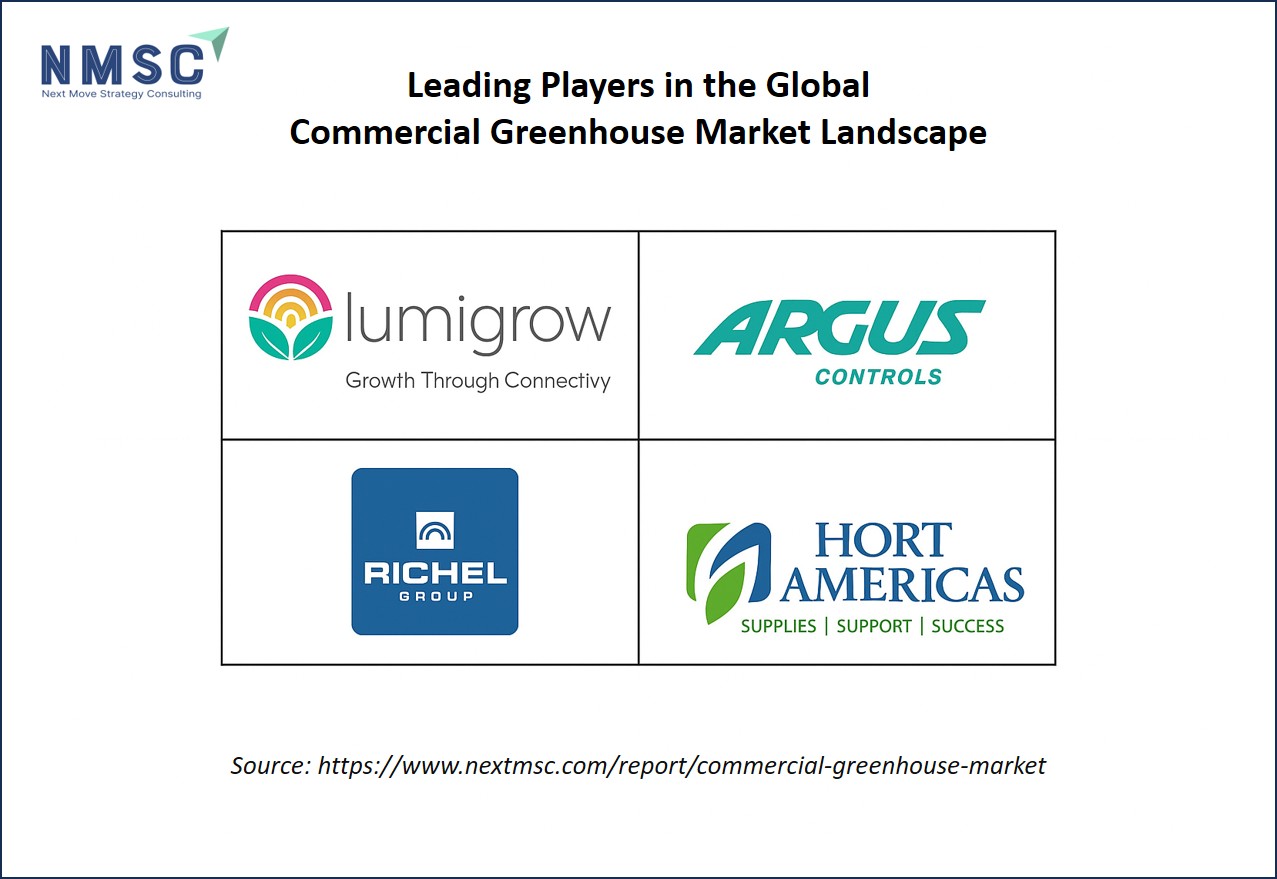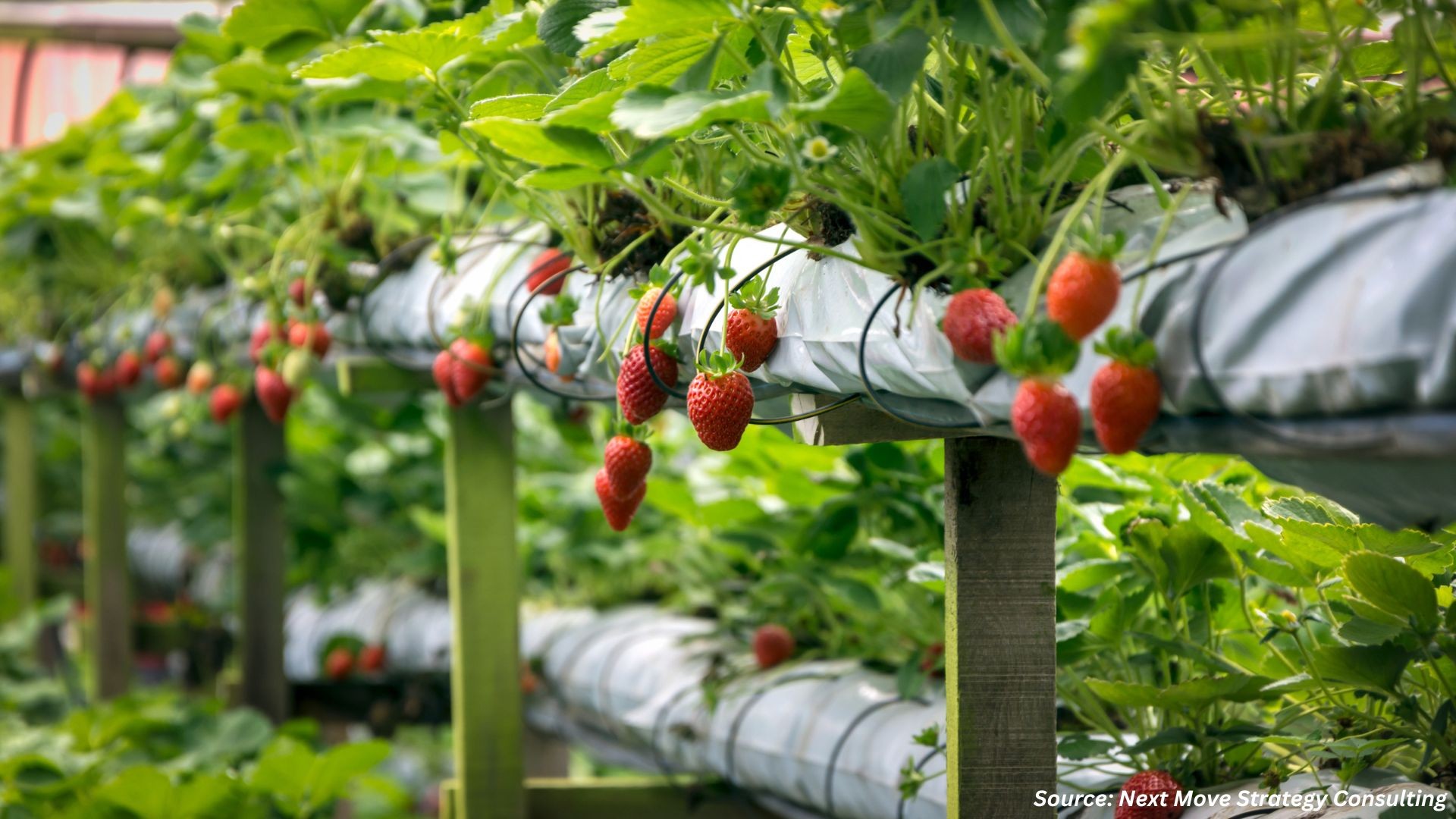What's Powering the Commercial Greenhouse Boom in 2025?
Published: 2025-09-17

The global Commercial Greenhouse Industry is predicted to reach USD 74.76 billion by 2030 with a CAGR of 9.26%. The market market is blooming, fueled by cutting-edge technologies and a global push for sustainable agriculture. With food security concerns and urbanization on the rise, greenhouses are becoming a cornerstone of modern farming.
This blog dives into the key trends, investments, and breakthroughs shaping the industry in 2025, offering a clear picture of where this market is headed and why it matters. Let’s explore the forces driving this growth and how they’re transforming agriculture.
Why Are Investments in Greenhouses Surging in 2025?
The commercial greenhouse sector is witnessing a significant influx of capital in 2025, driven by the need for sustainable food production and technological innovation. Investors are increasingly drawn to solutions that enhance efficiency and yield while addressing environmental challenges.
-
Capital Inflows: The greenhouse industry is attracting substantial investments due to its potential for high returns and sustainability. For instance, Freya Cultivation Systems secured €500,000 in seed funding to develop automated nutrient delivery systems for greenhouses, showcasing investor confidence in precision agriculture.
-
Government Support: In Canada, government-backed programs are funding climate-smart greenhouse projects, with initiatives like those from the U.S. Department of Agriculture inspiring similar efforts.
“The demand for greater control over growing conditions is fueling the need for larger, more efficient spaces designed for high-volume crop production. With the unique agricultural challenges that commercial greenhouses can address, 2025 is likely to see substantial investment in advanced, large-scale greenhouse structures,” says David Summerfield, Managing Director of Bridge Greenhouses. “By maximizing yields while minimizing resource use, modern greenhouses have made growing under glass a highly sustainable and efficient choice for commercial growers,” he adds.
-
Sustainability Focus: Investors are prioritizing eco-friendly technologies, such as solar-powered greenhouse glazing from ClearVue Technologies, which landed its first commercial contract in 2024.
Investments in 2025 are surging due to the promise of sustainable, high-yield farming. Government support and private funding are fueling innovations that make greenhouses more efficient and environmentally friendly.
How Are LED Lighting Breakthroughs Transforming Greenhouses?
Advancements in LED lighting are revolutionizing greenhouse operations, particularly in regions like Canada, where extended winters demand efficient lighting solutions. These technologies optimize plant growth while reducing energy costs.
-
Energy Efficiency: New, advanced LED lighting solutions reduce energy consumption by up to 20% compared to traditional lighting, enabling year-round cultivation in Canada’s harsh climate. Heliospectra’s MITRA X LED solutions will be installed in a new greenhouse by Havecon Horticultural Projects, integrated with Hoogendoorn’s climate control system. Built with premium components from OSRAM, CREE, and Inventronics, the modular platform (325–1500W) allows growers to customize light for optimal crop growth and efficiency.
-
Customizable Spectra: Modern LEDs allow growers to tailor light wavelengths to specific crops, boosting yields for crops like tomatoes and leafy greens. Blue light (400–500 nm) is essential for plant growth, stimulating vegetative leaf development and regulating phototropism—the tendency of plants to grow toward a light source. It also enhances chlorophyll production, a key factor in photosynthesis.
-
Market Impact: In 2024, Heliospectra secured an order worth 8.3 million SEK from an Ontario grower, highlighting the growing adoption of LED technology.
LED lighting breakthroughs are enhancing greenhouse efficiency and crop yields. By reducing energy use and optimizing light spectra, these systems are a game-changer for commercial growers.
What Role Does AI Play in Greenhouse Yield Optimization?
Artificial intelligence (AI) is transforming greenhouse farming by enabling precise crop management and yield forecasting. Companies like Source.ag are leading the charge with AI-driven solutions tailored for commercial greenhouses.
-
Yield Forecasting: Source.ag’s AI platform predicts tomato yields with accuracy, allowing growers to optimize resources. Tomatoes take six to eight weeks from fruit set to harvest. Most of this period—around 90%—shows little visible change, making it difficult to judge the fruit’s stage of development. Ripening and color change often begin only around week seven, and factors such as temperature, light, CO₂, and humidity can further influence the final fruit weight.
-
Automation Integration: AI integrates with automated systems to monitor soil conditions, nutrient levels, and climate, reducing labor costs.
-
Scalability: In 2025, Source.ag launched new product tiers to accelerate AI adoption, leading the charge by offering more tailored solutions to make key functionalities and AI more accessible.
AI is revolutionizing greenhouse farming by providing precise yield predictions and automating resource management. This technology enhances profitability and scalability for growers of all sizes.
How Is Root-Zone Cooling Technology Gaining Traction?
Root-zone cooling technology is an emerging innovation that optimizes plant growth by controlling soil temperatures, particularly in hot climates. This breakthrough is gaining traction in 2025.
-
Technology Overview: Opticrop’s root-zone cooling system, deployed in its first commercial project in 2024, maintains optimal soil temperatures, improving crop quality.
-
Water Efficiency: The system reduces water usage by 15% by minimizing evaporation, making it ideal for water-scarce regions.
Root-zone cooling technology is enhancing crop quality and water efficiency. Its adoption in challenging climates underscores its potential to reshape greenhouse farming.
What Are the Challenges Facing the Greenhouse Market in 2025?
Despite its growth, the commercial greenhouse market faces hurdles that could slow its progress. High initial costs and technical expertise requirements remain significant barriers.
-
High Setup Costs: Advanced systems like LEDs and AI require substantial upfront investment, which can deter small-scale farmers.
-
Technical Expertise: Operating smart greenhouses demands skilled labor, which is scarce in some regions.
-
Energy Concerns: While LEDs and solar glazing reduce energy use, high energy costs for climate control remain a challenge in colder regions.
The greenhouse market faces challenges like high costs and the need for skilled labor. Addressing these barriers is crucial for sustained growth.
Who Are the Key Players in the Commercial Greenhouse Market?
The commercial greenhouse sector is highly fragmented, with leading companies including LumiGrow, Argus Control Systems Ltd., Richel Group, Logiqs BV, Rough Brothers, Inc., Heliospectra AB, Certhon, Berry Global, Agra-tech, Inc., Hort Americas, and Signify Holding. To strengthen their market presence, these players are pursuing strategies such as investments and strategic agreements.
Next Steps for Stakeholders in the Commercial Greenhouse Market
To capitalize on the opportunities in the commercial greenhouse market, stakeholders must act strategically. Here are actionable takeaways for 2025:
-
Invest in Scalable Technologies: Explore AI and LED solutions to boost efficiency and yields, as demonstrated by Source.ag and Heliospectra.
-
Seek Government Funding: Leverage subsidies and grants for sustainable agriculture projects, as seen in Canada.
-
Focus on Water-Efficient Systems: Adopt technologies like root-zone cooling for water-scarce regions to enhance sustainability.
-
Train Workforce: Invest in training programs to build technical expertise for managing smart greenhouses.
-
Explore Solar Innovations: Consider solar-powered glazing, like ClearVue’s, to reduce energy costs and enhance sustainability.
About the Author
 Sneha Chakraborty is a seasoned SEO Executive and Content Writer with over 4 years of experience in the digital marketing space, bringing a strong command of online visibility strategies and a keen insight into the evolving digital landscape. She specializes in enhancing online visibility and user engagement through data-driven strategies and creative content solutions. Sneha is passionate about translating complex digital concepts into accessible content for a wide audience. Outside of work, she enjoys reading, sketching, and exploring the outdoors through nature photography.
Sneha Chakraborty is a seasoned SEO Executive and Content Writer with over 4 years of experience in the digital marketing space, bringing a strong command of online visibility strategies and a keen insight into the evolving digital landscape. She specializes in enhancing online visibility and user engagement through data-driven strategies and creative content solutions. Sneha is passionate about translating complex digital concepts into accessible content for a wide audience. Outside of work, she enjoys reading, sketching, and exploring the outdoors through nature photography.
About the Reviewer
 Sanyukta Deb is a skilled Content Writer and Digital Marketing Team Leader, specializing in online visibility strategies and data-driven campaigns. She excels at creating audience-focused content that boosts brand presence and engagement, while also pursuing creative projects and design interests.
Sanyukta Deb is a skilled Content Writer and Digital Marketing Team Leader, specializing in online visibility strategies and data-driven campaigns. She excels at creating audience-focused content that boosts brand presence and engagement, while also pursuing creative projects and design interests.















Add Comment